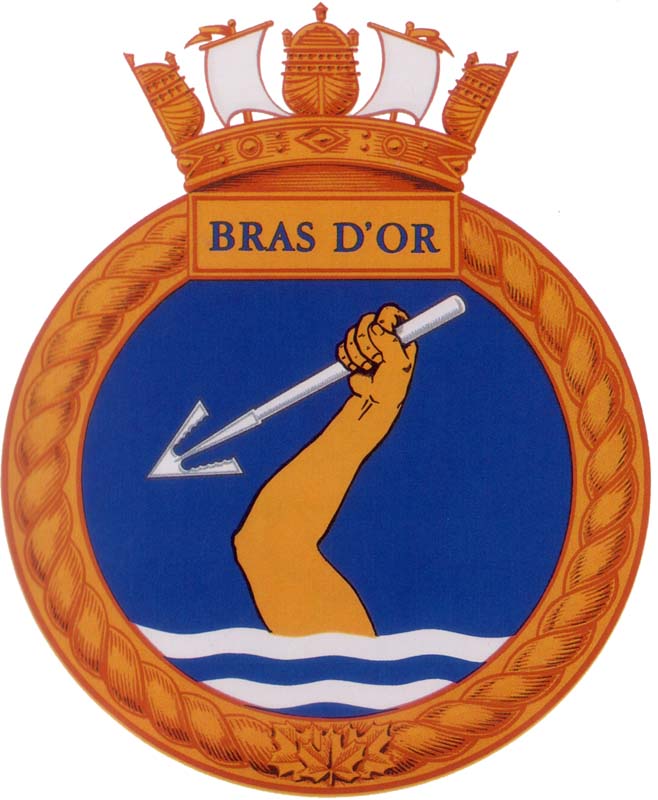HMCS BRAS D'OR Badge

Blazon
Azure, issuing from a base barry wavy of four argent and azure, an arm embowed or, the hand grasping a pheon-headed spear in bend sinister pointed to the dexter argent.
(Glossary of Heraldic Terms)
Significance
The name Bras d’Or, meaning “golden arm” in English, is derived from the salt-water lakes of Cape Breton, Nova Scotia. The badge design depicts the golden arm rising out of the water, the hand grasping a spear.
Remarks
The first Bras d'Or to serve with the RCN was built in Sorel, Quebec in 1919 as an auxiliary minesweeper. She patrolled the Halifax approaches between 1939 and 1940. On the night of October 18 while shadowing a freighter, she disappeared without a trace. The second Bras d'Or was classified as a Fast Hydrofoil Escort, and with a speed in excess of 60 knots, was nearly ten times faster than her RCN predecessor. Bras d'Or (II) was commissioned in July 1968, and wore pennant 400 until being paid off in May 1972. She had been named for the place where the first hydrofoil tests took place in the early years of the 20th century.
Colours
Gold and blue.
References
Badges Of The Canadian Navy by Arbuckle, J. Graeme. Halifax: Nimbus Publishing, 1987.
